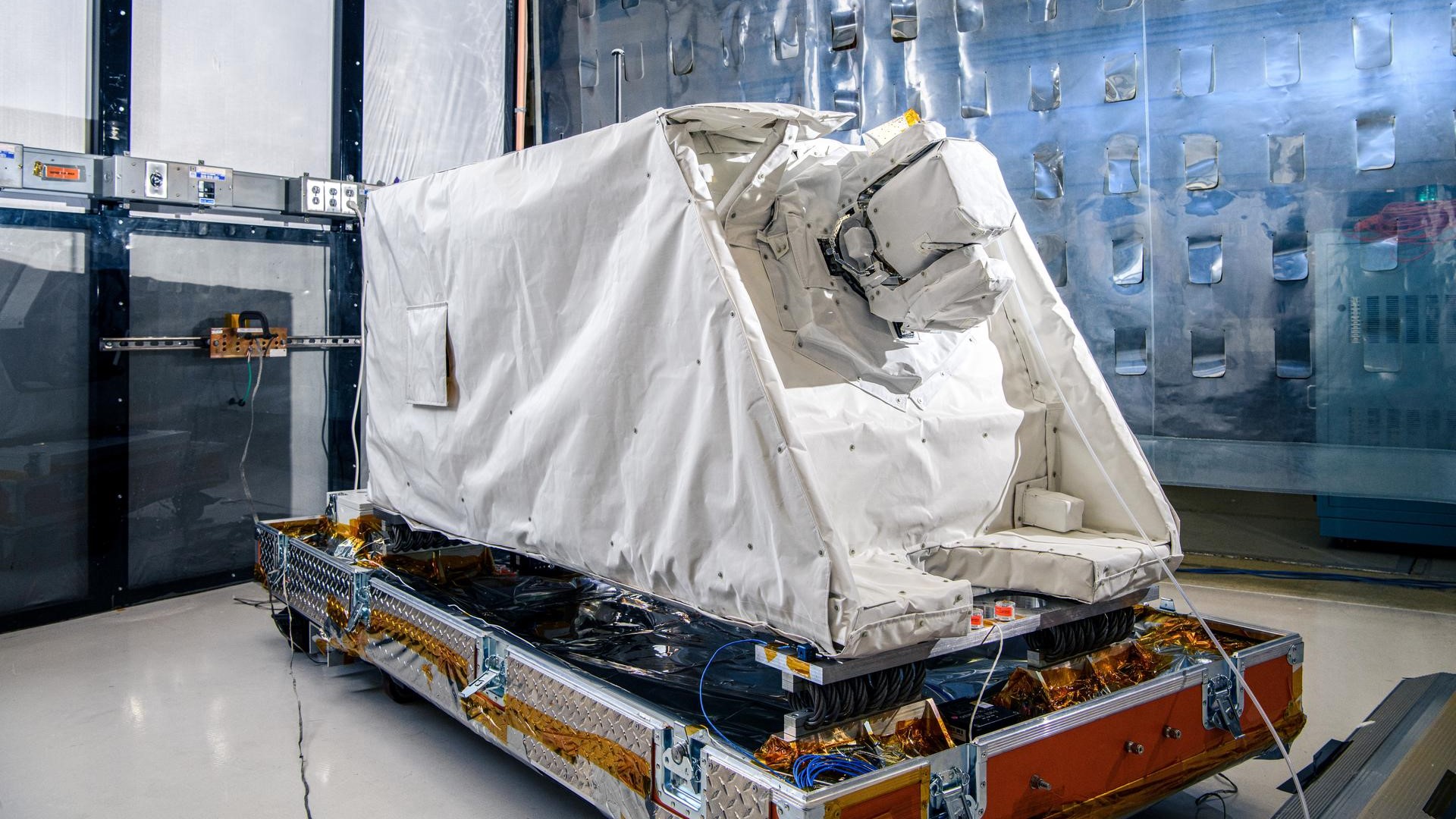SpaceX to launch final piece of NASA's 1st two-way laser communications relay
This is the type of technology we'll need if we want the luxuries of high-speed WiFi on our future moon base.

The final piece to NASA's first two-way laser communication relay system will soon launch to the International Space Station (ISS).
The ILLUMA-T terminal, which is about the size of a large chest, will stow in the trunk of a Cargo Dragon spacecraft as a part of SpaceX's CRS-29 resupply mission, currently scheduled for no earlier than Nov. 5. Once delivered, the terminal will be attached to the space station's exterior.
ILLUMA-T, short for the Integrated LCRD Low-Earth-Orbit User Modem and Amplifier Terminal, is the last piece of hardware needed for NASA's first demonstration of the two-way laser communication technology in space. ILLUMA-T will be used to transmit data through the Laser Communications Relay Demonstration (LCRD) satellite, which will beam that data to optical ground stations in Hawaii and California.
Related: Artemis 2 will use lasers to beam high-definition footage from the moon (video)
LCRD launched into a geosynchronous orbit in Dec. 2021, and has been waiting for ILLUMA-T's installation ever since. Radio transmissions have served as the standard form of communication with spacecraft since Sputnik first graced Earth's orbit more than 65 years ago, and is still used today to communicate with everything from the ISS in low Earth orbit (LEO), to the Perseverance rover on Mars. However, operators are limited in the amount of data they are able to transmit due to radio's longer wavelengths.
Comparatively, the much shorter, infrared wavelengths of lasers are able to carry amounts of information that are multitudes higher than conventional radio. ILLUMA-T is capable of transmitting more than 1.2 gigabytes per second, which is pretty good even compared to higher home internet rates on Earth.
The components required to build laser communication arrays are also much smaller, lighter and consume less energy than their radio counterparts, allowing future spacecraft greater freedom for scientific instrumentation options in place of bulky communication systems. Because of this, NASA is planning on integrating the technology into vehicles that will venture into deep space.
Breaking space news, the latest updates on rocket launches, skywatching events and more!
When applied to missions to the moon and beyond, the higher data rates of laser communications mean larger, high-definition photos and videos, and denser, more complex scientific data.
In fact, the Orion Artemis 2 Optical Communications System (O2O) is being installed on the spacecraft set to launch a crew of four astronauts on a mission around the moon next year. If successful, Artemis 2 astronauts will be able to transmit live footage from cis-lunar space like never before.
O2O, ILLUMA-T and LCRD are all funded through NASA's Space Communications and Navigation (SCaN) program, and were developed through partnerships at the space agency's Goddard Space Flight and Johnson Space Centers, with the Massachusetts Institute of Technology Lincoln Laboratory.
In addition to ILLUMA-T, SpaceX’s CRS-29 Cargo Dragon will carry several thousand pounds of other scientific equipment, food and other supplies for the ISS crew. A Falcon 9 rocket is currently scheduled to launch the haul no earlier than 10:01 p.m. EST Sunday, Nov. 5, from Launch Complex-39A (LC-39A), at NASA's Kennedy Space Center, in Florida.

Josh Dinner is the Staff Writer for Spaceflight at Space.com. He is a writer and photographer with a passion for science and space exploration, and has been working the space beat since 2016. Josh has covered the evolution of NASA's commercial spaceflight partnerships and crewed missions from the Space Coast, as well as NASA science missions and more. He also enjoys building 1:144-scale model rockets and human-flown spacecraft. Find some of Josh's launch photography on Instagram and his website, and follow him on X, where he mostly posts in haiku.

